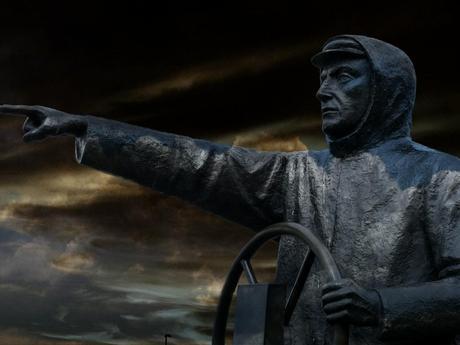 It was bound to happen at some point. A dangerous combination of short stature, small frame and an unfeasibly loud voice could mean only one thing. At some point I was inevitably going to end up coxing a race. However much I might protest – and protest I did – coxing was always going to be part of my destiny.
It was bound to happen at some point. A dangerous combination of short stature, small frame and an unfeasibly loud voice could mean only one thing. At some point I was inevitably going to end up coxing a race. However much I might protest – and protest I did – coxing was always going to be part of my destiny.
And so it is that I shall be making my coxing début this weekend, at a tricky, upstream head race with a nasty bend. What could possibly go wrong?
Well, the answer is quite a lot, according to the many coxswains I have consulted over the last few weeks. After all, as the cox you are in charge of an expensive boat, at the mercy of your crew’s reactions and the good sense of other river users, navigating a capricious (and often unfamiliar) river. And all at race pace. Gulp. Oh, and did I mention that whilst you’re worrying about all of this, you’re also supposed to come up with fabulously motivational calls to keep your crew rowing their hardest?
Anyway, after much research (and a few sleepless nights) I have been able to compile a handy, cut-out-and-keep guide to coxing a head race. Now all I have to do is execute them.
Navigating
Do your homework. Get hold of a map of the course (the host club may have one on its website) so you can plan your race and work out your steering before the day. Use google maps to get a visual picture of the course.
Know the rules and marshalling instructions. Different courses have different rules of navigation. Some races have sections where you’re not allowed to overtake.
Speak to locals to ask about landmarks, or ask a marshall where the main landmarks are on the course. Don’t know any locals? Twitter is your friend.
If the course involves a nasty bend, practice steering around bends at speed.
On the day, walk as much of the course as you can.
Know where the start and the finish are.
Get an understanding of the stream so you can steer the fastest line. Throw some sticks in and see where the stream is the fastest – stay in or out of it accordingly.
If possible, do a couple of test runs of the course. Sometimes to get it right you’ve got to get it wrong first.
Steer as little as possible by plotting your course as far in advance as you can so you’re not taken by surprise by a bend or another crew.
Race plan
Talk to your crew (and coach, if you have one) in advance to work out a race plan and find out what technical calls they want you to make. Your crew needs to be committed to a race plan and so do you.
Have a plan to keep the rowers focused.
Plan the row up to the start; know how you will warm the crew up, though be prepared to be flexible as there will be a lot of other crews on the river.
Calls
Encourage the crew throughout the race; don’t make them feel bad, even if they fall behind.
Don’t go quiet; your crew will get spooked.
Conversely, don’t shriek all the way. Give the crew time to respond to calls and save your excitement for when it’s needed.
Give the crew simple, specific things to do, such as, “Finishes, go”. Stick to one thing at a time, eg. catches, finishes, length, etc..
If you’re gaining on another crew, tell them (best not to track progress if they’re losing ground). Also push into and away from obvious landmarks.
Let them know how far into the race they are.
Have a fund of pithy phrases. Keep it simple, varied and save one or two new ones for the tough bits.
Generally
Find out in advance when and where the coxes’ briefing is so you don’t have a panic on the day.
Make sure someone (probably you!) has brought the cox box and life jacket. Rowers are likely to forget the cox’s equipment in all the excitement.
Make a list of what you need to remember to do on the day, before the race as well as on the water - basic things like checking top nuts and getting the crew to check their foot-plates and rigger screws before they start.
Put a rigger jigger in your pocket.
Dress up warmly. You’ll be glad of the layers.
Think calm thoughts!
Afterwards
Be positive, no matter how the race has gone.
And finally and most importantly …
Bring cake for your crew. You can get away with a huge amount if you bring cake.
Special thanks go to awesome GB supercoxes Zoë de Toledo and Morgan Baynham-Williams who kindly took time to offer advice; to Helena Smallman-Smith for sending me a whole sheet of tips about coxing a head race and to the countless others who stepped forward with advice, tips, dire warnings and horror stories. Sorry I haven’t got room to name you all individually.
If I’ve missed anything out, be sure to let me know.
Above all, wish me luck. I may just need it.
